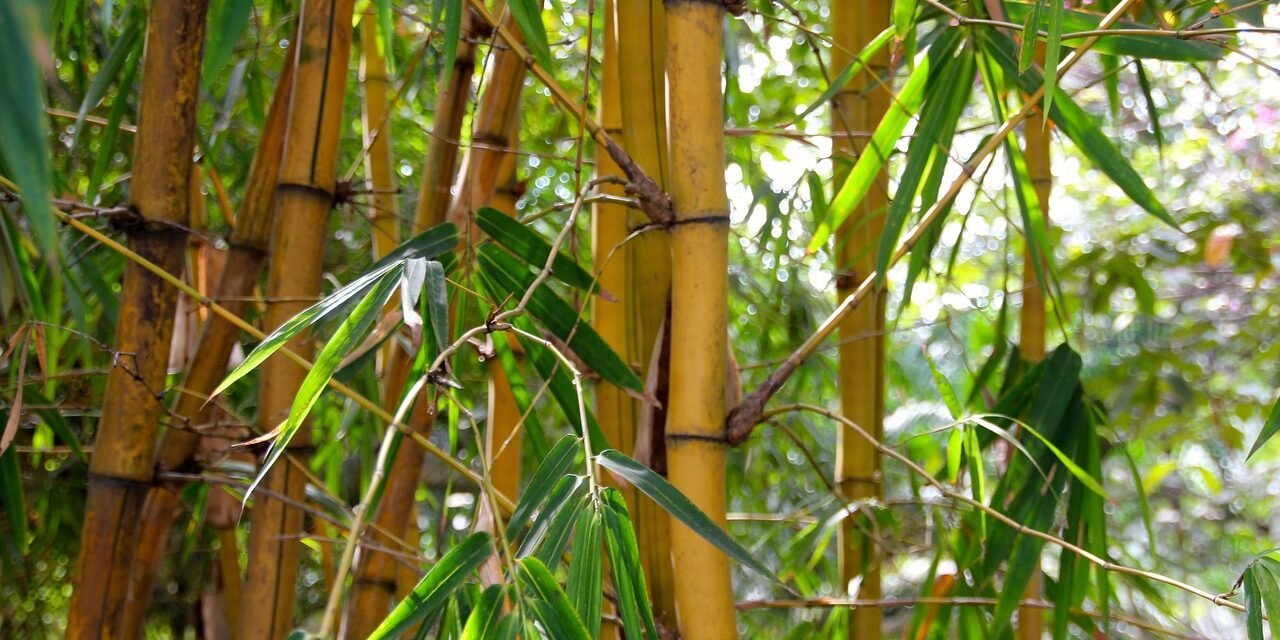Jamaica’s bamboo craft industry blends deep-rooted tradition with modern opportunity. For centuries, bamboo has been part of rural Jamaican life—used to make fences, furniture, baskets, and cooking utensils. Today, as the world looks for sustainable alternatives to plastic and wood, bamboo is gaining renewed attention. Jamaica is uniquely positioned to turn this humble plant into a driver of rural employment, cultural preservation, and export growth.
A Resource Hiding in Plain Sight
Bamboo grows wild across much of Jamaica, especially in parishes like St. Mary, Portland, and St. Thomas. Jamaica is home to several native and introduced bamboo species, including Bambusa vulgaris, which is both fast-growing and highly versatile. Unlike hardwoods, bamboo reaches maturity in just three to five years, regenerates quickly, and doesn’t need replanting after harvest. Its environmental benefits—such as preventing soil erosion and absorbing carbon dioxide—add to its appeal.
Despite its abundance, bamboo in Jamaica has long been underused commercially. Historically, it has been more associated with folk crafts or informal construction than with organized industry. That’s changing.
A Revival Through Craftsmanship
In communities like Bamboo, St. Ann (yes, the name is fitting), local artisans have kept bamboo crafting alive through generations. Traditional products like baskets, mats, fish pots, and lamp shades continue to be made using age-old techniques. These crafts aren’t just beautiful—they’re functional, biodegradable, and culturally significant.
The Jamaican government and organizations like the Bureau of Standards Jamaica (BSJ) have recently stepped up efforts to standardize and promote bamboo products. In 2014, Jamaica officially joined the International Network for Bamboo and Rattan (INBAR), opening doors for international collaboration and investment. Since then, there’s been growing support for bamboo as a viable material for commercial goods ranging from furniture to flooring to paper.
Government Support and New Ventures
The BSJ has led national initiatives to train artisans, improve product quality, and develop a local bamboo industry framework. Meanwhile, the Ministry of Industry, Investment and Commerce (MIIC) has identified bamboo as a key sector under Jamaica’s push for green economy development. The government has provided funding for pilot projects, including bamboo charcoal production and the manufacturing of bamboo-based textiles and composites.
In 2020, a bamboo pre-processing facility was launched in Chedwin Park, St. Catherine, with support from the Bamboo Industry Association of Jamaica. This facility aims to prepare raw bamboo for commercial use, creating a value chain that connects farmers, processors, designers, and exporters.
Export Potential and Global Trends
Globally, the bamboo industry is worth over US$60 billion, with China and India leading the way. Jamaica may be small, but its strategic location and creative potential give it an edge. Tourists often seek authentic, handmade souvenirs, and bamboo crafts—when well-designed and marketed—are a natural fit.
Jamaican entrepreneurs are beginning to experiment with innovative bamboo products: cellphone holders, cutlery sets, jewelry, and even bicycle frames. With a strong brand identity rooted in culture, music, and natural beauty, “Made in Jamaica” bamboo products could carve out a niche in international eco-lifestyle markets.
Challenges to Overcome
Despite the promise, several hurdles remain. Access to financing for small bamboo businesses is limited. Farmers need training on sustainable harvesting and crop management. Many artisans still lack proper tools, safety equipment, or marketing channels to grow their craft into a sustainable livelihood.
Quality control is also key. To compete internationally, Jamaican bamboo products must meet export standards in terms of durability, finish, and consistency. More research and development are needed to diversify product lines and enhance technical skills across the supply chain.
The Way Forward
To unlock its full potential, Jamaica’s bamboo craft industry must bridge the gap between tradition and innovation. That means investing in training, upgrading tools and techniques, and building partnerships between artisans, designers, and exporters. Local schools and vocational programs could help nurture the next generation of bamboo entrepreneurs. And with global demand for green products on the rise, now is the time for Jamaica to act.
Bamboo may be one of the island’s oldest resources, but its future is wide open. With the right support and vision, Jamaica’s bamboo craft industry can become not just a symbol of cultural heritage—but a pillar of economic resilience and creative expression.









